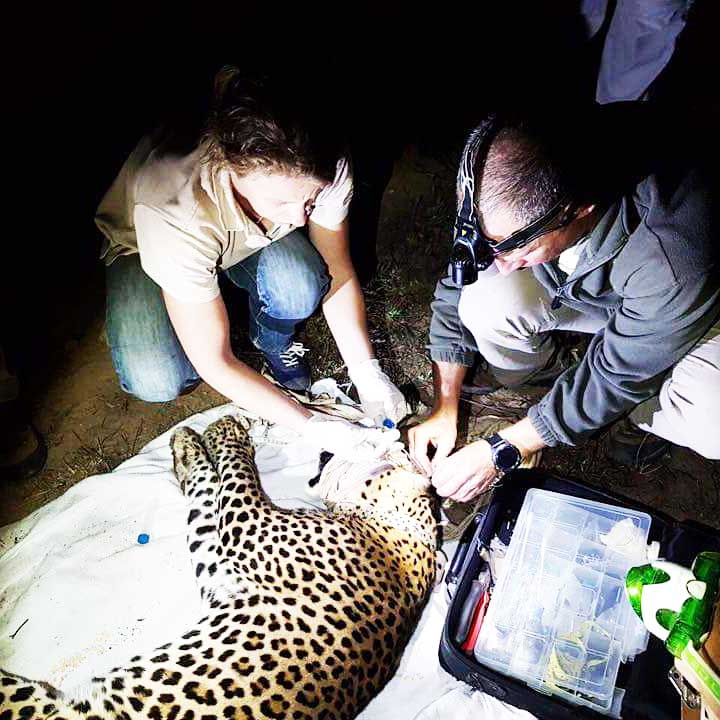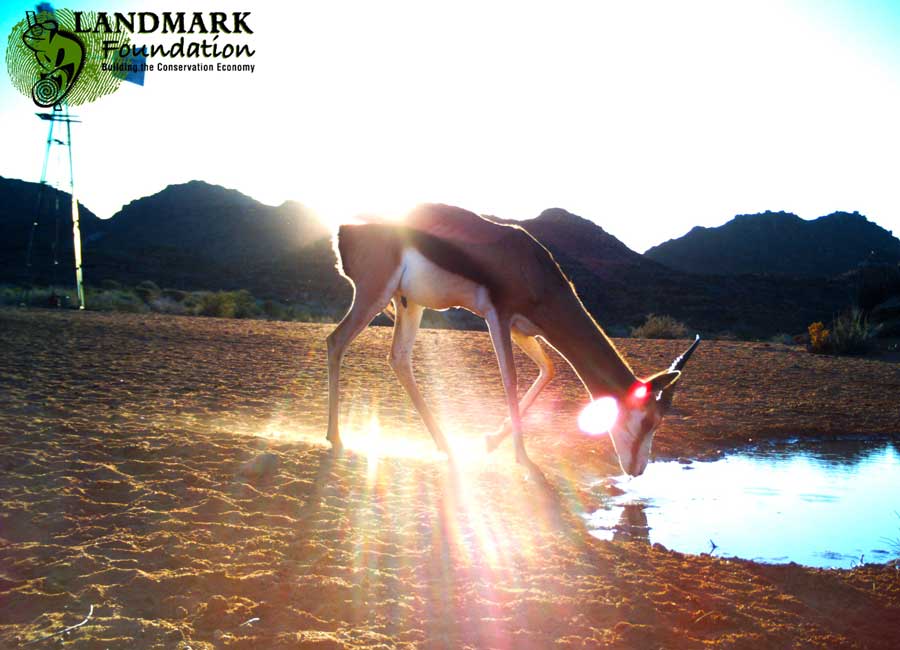
PAST LANDMARK FOUNDATION PROJECTS
BIOSPHERE RESERVE PROJECT
Amathola Mountains Biosphere Reserve Project
The Landmark Foundation, with the Amathole District Municipality, developed the feasibility study project concept document for the Amathole Mountain Biosphere Reserve. The idea of this biosphere reserve has been formally promoted, amongst others through the Eastern Cape Provincial Department of Economic Affairs, Environment and Tourism, since the 1990s.The concept of a biosphere reserve is particularly well suited to the region in question. Of an area that involves in excess of 100 000 hectares, more than a third of the area is already under some form of statutory conservation. Much private and community land is also conservation-worthy and thus suites the concept of a Biosphere reserve well.
The ultimate challenge of establishing a biosphere reserve is to establish systems and structures to enable the conservation of biodiversity patterns and processes, cultural and historical assets and the living landscapes contained in the area of focus, while meeting the material needs and desires of the people that live in the region. The biosphere reserve concept is an attempt to address the sustainable development of an area through a land-use zonation that sets aside areas defined as the core area, the buffer zone and transition areas where different forms of land uses are promoted and tolerated.
Biosphere reserves aim to reconcile apparently conflicting ambitions of the conservation of biological and socio-cultural diversity, while promoting economic and social development. The concepts of Biosphere Reserves originated in the 1960s & 1970s and emanated from the UNESCO (United Nations Educational, Scientific and Cultural Organisation) Conference on the Conservation and Rational Use of the Biosphere. The conference resulted in the launching of the Man and the Biosphere (MAB) Programme, and the promotion of the biosphere reserves grew from this initiative. Biosphere reserves have to meet set criteria and are nominated by governments for admission to UNESCO’s “World Network” on qualification. This is the ultimate objective of the feasibility study, which is to develop a feasibility of establishing, managing and developing a biosphere reserve in the Amathole Mountain Complex.
The core functions as a dedicated conservation area, which is not dominated by human activity and as such is under formal conservation management and monitoring. The Amathole Mountain Biosphere is likely to have several core areas, some linked and some separate.
The buffer zone is clearly delineated and activities permitted augment the conservation objectives of the core areas. It is an area where research, training, education and tourism are likely to be the major activities. A buffer zone may even have non-core conservation activities, like agriculture and forestry, but efforts are made to conserve the natural assets or impacts on the natural assets. Typically ecological restoration and conservation actions could and should be promoted in this zone, and conservation economy developments should be actively explored.
The transition zone is the area where most of the extractive economic activities occur. This is the zone in which most of the communities, farmers and other commercial activities are currently active. In this zone cooperative strategies are to be developed to utilise natural resources sustainably. In the Amathole Mountain Biosphere Reserve this would entail conservancies, community projects, e.g. the commercial utilisation of wattle infestations as a means to control the alien plant problems.
The biosphere must function to effectively conserve the biodiversity and cultural assets of the area, it must provide for economic and social development opportunities that are sustainable, and it must logistically provide for management, educational, research, monitoring and information sharing that enables to conservation estate’s development locally and internationally.
The Biosphere concept has several benefits. Communities will benefit through enhanced local economic development opportunities and a better-managed environment. The statutory agencies and local governments will improve cooperation and shared objectives in managing areas and have a governance structure in which to operate collectively. Private enterprise will benefit from a structure that creates opportunities from tourism and resource use that is sustainable. The conservation community will benefit from an area that is effectively conserved.
Biologically the Amatholes is an important area. It is a convergence zone of important biomes and represents a fantastic opportunity to capture landscape conservation opportunities.
The area represents a convergence of the Nama Karoo, Afro-montaine forests, Grasslands, the Pondoland coastal flora, and elements of the Fynbos biome. It has species diversity of spectacular proportions with more than 1200 species identified, and in particular the forests of the region are especially species diverse.
The bio-regional programmes such as STEP, the grasslands programme, relevant issues from the Wild Coast Project, the Drakensberg initiatives, and the relevant aspects of the CAPE programme was integrated into the biosphere plans that the Landmark Foundation drafted.
ONE ELEPHANT IN THE KNYSNA FOREST
The Knysna Elephant
A Brief History of The Knysna Elephant
The Landmark Foundation’s Leopard and Predator Project is undertaken across the Eastern and Western Cape. One research site is the forest between George and Plettenberg bay. We placed camera traps at approximately 3.5 km apart throughout this forest in order to estimate leopard density and to establish biodiversity indices. We often get ‘by-catch’ of species which is important part of the data collection.
One particular species was of great interest, we photographed a Knysna Elephant. These iconic animals have reached almost mythical status and have been the talks of myth and legend for ages, first by the local san people and then later by the first settlers who extensively harvested the forests to for timber.
Much speculation abounds about the precise no of remaining elephants, but from our camera trap (set across 180 000ha of forest) data which ran for 18 months we appeared to capture the same one female elephant across the forest during the survey. While we hope we are wrong, a female elephant is never without her herd nearby. This image matches others taken over the last 12 years of a female with skew tusks.
Thus the worst case scenario that only 1 lone matriarch still inhabits the forests may be true. This fact raises serious concerns about the future management of the last remaining forest Giant. The following narrative is a brief history of the Knysna elephant over the last two centuries: 1860 Due to extensive ivory hunting in the forests, the Knysna forest elephant is officially protected by the government of the Cape.
1876 Surveys of the forest estimate there to be around 500 elephants remaining.
1908 Continual poaching and little in the way of law enforcement and protection has decimated the population to an estimated 20 individuals.
1920 A new survey is conducted revealing the presence of an estimated 12 individuals, confined to small patches of forests Later in the year 5 elephants are shot by a Major Pretorius thus leaving an estimated 7 individuals. 1951 an estimated 4-8 elephants remain.
1950’s &1960’s Several inconclusive surveys are conducted but outcomes are vague.
1968 Concerned with the lack of data the Eastern Cape Branch of the wildlife Society form an elephant working group and commission a survey this survey concluded an estimated population of 7-10 individuals
1970 Nick Carter a game warden with considerable elephant knowledge is commissioned to do a further Survey a population of 10 elephants is firmly established with a calf being born shortly after the survey. He thus concluded that the population had remained static for 50 years the Elephants were seen to be in equilibrium with their environment and were breeding normally. It was concluded that no further management actions were necessary.
1971 Forestry officials secretly shoot an old bull 1980 For a decade little is done about the elephants until in 1980 Forestry officials grimly announce that only 2 elephants remain a Cow and a calf 1981 An elephant working group is established to discuss and recommend management plans for the elephant, amongst other recommendations it was recommended to bring 4 elephants from the Addo Elephant National Park, these recommendations were overruled by the Government stating that it could not be responsible for the possible damage caused to infrastructure by elephant.
1982 Elephant Working Groups is officially disbanded 1986 Daleen Matthee’s famous book Circles in a forest (Kringe in die Bos) is published, this book becomes a best seller and gives impetus to the plight and conservation of the Knysna elephant raising interest by public 1990
Various organizations band together and request Government to revisit their stance on not introducing further elephant 1994
Three cows are brought from Kruger and released into a boma at Diepwalle, after which they are released into the forest. One Cow dies shortly after this from excessive roving after the matriarch. The remaining cows seem to move to farm pastures and do not inhabit the forests causing damage. 1999 The two young cow elephants are captured and moved to Shamwari 2002 Sightings suggest 3 elephants 2007
Fecal DNA analysis point at 5 remaining females but sightings and other evidence does not confirm this analysis 2015 18 months of Grid camera trapping of the forests by the Landmark Foundation reveals only 1 matriarch
Green Chipboard
This project was short-listed to the international World Bank Development Marketplace competition finals in Washington in May 2005. This was a global competition of innovative sustainable development projects and reached the finals from almost 3000 entries globally. The project is an attempt at dealing with a host of sustainable development issues through solving several major environmental and development issues, namely:
- Alien Invasive Vegetation Clearing
- Adding Value to Waste Streams
- Employment Creation
- Entrepreneurship
- Local Economic Development
- Energy Saving
- Housing Solutions
The project that will look at producing wood composite material (chipboard and/or hardboard material) from alien woody plants cleared from areas of biodiversity importance, where invasive alien plant species are threatening indigenous habitats. To implement this project we need private sector and civil society partners to help with the piloting of the idea. The intention is that alien woody plants are cleared and that value is added to this waste through producing chipboard/hardboard. The wood composite material could either be used for housing material or sold informally or commercially. Through this activity, jobs could be created and entrepreneurs will be encouraged to develop sustainable businesses. The product will be a tile/panel that will be used in informal housing and low cost housing as DIY insulation ceiling boards. This significantly adds to energy and cost savings for this housing sector. This project will contribute greatly to providing an economic incentive to remove alien vegetation from the landscape. The project has been through the research and development stage of the product and is ready for implementation Alien plants overgrow indigenous habitats Aliens are more prone to fire Low-cost housing can benefit from this board
Solar Solutions
This project proposes a new application of existing technologies to provide a solution to South Africa’s energy needs. It brings a unique African solution to our energy crisis and at the same time addresses pressing economic, environmental and social concerns.
This is a local economic development project targeting low-income/unemployed households that give them access to energy and carbon markets while contributing to renewable energy development and water-saving efforts. The commercial potential of this project is vast. The Landmark Foundation has developed the project concept, feasibility analysis and business plan, and is now working towards its pilot and implementation.
This project will pilot a grid-connected solar power scheme that produces renewable solar energy, solves a housing problem, provides rainwater collection and generates income for poor households. The pilot will form the basis of a commercial venture and partnership. South Africa plans to build millions of low-cost houses. This project proposes fitting these houses with:
- 40 square meter solar panel roofs
- Solar water heaters
- Runoff rainwater collection system
This will improve the housing standards, produce renewable energy, and at the same time provide solar-heated water and catch rainwater. The excess energy that the household produces will be sold to the national grid/municipal supplies. This excess power could become a source of income to the households (estimated to be about $100 per month).
This financial incentive ensures that the homeowners care for the revenue generator – the solar panel roofs; simultaneously water is collected in 5000-litre tanks and water is solar heated, reducing water demand in a water-scarce country. The housing developments will be organised into energy cooperatives and will feed their energy into the grid.
This project is currently being developed in partnership with the Development Bank of South Africa, Eastern Cape Development Corporation and the Nelson Mandela Bay Municipality.
Protected Area Expansion
Garden Route to Addo Conservation Corridor
The Garden Route to Addo conservation corridor initiative that aims to link with formal protected areas between the Garden Route, Baviaanskloof and Addo Elephant National Park through the collaboration with conservation-minded landowners.The Garden Route is one of the premier tourism destinations in Southern Africa; evidenced by the fact that more than 25% of all foreign visitors to South Africa visit the area as part of their visit to the country. The area has been subject to unprecedented growth of the housing and resort sectors.
Recent efforts, supported by GEF, Conservation International and the South African government has seen localised protected area expansion programmes in the Garden Route, Baviaanskloof and Addo National Park. This initiative will seek to establish the link between these localised initiatives. Through a conservancy mechanism (20 000 hectares) the Landmark Foundation has effected a corridor connection between the Garden Route conservation areas in the Tsitsikamma Mountains and the Baviaanskloof.
This is a first major step in effecting the long-held dream (and often described as an impossible ambition) of connecting the protected areas of the Garden Route and Addo. This major initiative is ambitiously hoping to create, through public-private partnerships, an ecological corridor of (perhaps) 2 million hectares to enable and restore historical, ecological and evolutionary migration of genetic material and species along this corridor. Other conservancies are in various stages of development presently.
Skilderkrantz Private Nature Reserve
The Skilderkrantz Private Nature Reserve and Conservation Initiative was conceived in 2003 to acquire land for the purpose of expansion of the Baviaanskloof Mega-reserve, one of South Africa’s newest World Heritage sites. Skilderkrantz, as part of the Baviaanskloof, forms an important component in the Garden Route to Addo Conservation Corridor Initiative, which aims to form a province-wide network of protected areas linking the Addo Elephant Park with the Garden Route protected areas.
This project is unique in that a conservation-minded investor acquired more than 40 land title deeds comprising almost 10 000 hectares of (citrus and small stock) farmland and plans a major restoration process whereby an entire river catchment will be restored to it former natural state. The Landmark Foundation conceptualised and negotiated this agreement. The restoration work of natural and cultural heritage is underway and the Landmark Foundation was an active partner to develop this project.
Skilderkrantz was a central and primary partner in the Landmark Foundation Leopard and Predator Project and is a prime example of expanding the territory of predators. This project will in time be a landmark conservation initiative and will prove a popular destination for the discerning conservation-minded traveller. The historic cottages of the Langkloof are being restored as accommodation units and a wellness retreat is being planned. www.skilderkrantz.com
Tourism Development
Upper Tsitsa Falls Adeventure Tourism & Agriculture project
The Upper Tsitsa Falls Adventure Tourism and Agriculture project will establish an anchor adventure tourism attraction and agriculture (hazelnut) project in the Maclear area of the Eastern Cape, which is located in the Elundini Local Municipality and the Ukhahlamba District Municipality. The project seeks to be a catalyst for local economic development through conservation friendly tourism and agricultural activities that will be a model for sustainable development. It is located in one of the poorest and least developed parts of the Eastern Cape.
The project is a partnership between local communities and two private landowners. The project will develop a tourism venture, a small nature reserve and cash crop and hazelnut venture in a private community partnership.
The key problems being addressed are: The limited diversity of the tourism products offered in the north-eastern Eastern Cape despite its potential for diversification and development of this sector:
- The lack of agricultural development in community areas with good agricultural potential.
- The lack of sustainable rural jobs that are largely in line with local skills and capabilities in remote areas.
- The lack of income and livelihood-generating opportunities in the least developed parts of Eastern Cape
There is currently a small private enterprise (The Falls Backpackers), operational for the last 6 years, which is experiencing some growth. The problems of the region can be addressed through the development of a community–private sector partnership through this project. The final beneficiaries are the inhabitants of Mfabantu (population 319), Kholopan (population 832), Lower KGO (population 272), Great PLA (Population 141).
The target groups are the Upper Tsitsa Community Trust, The Falls Backpackers, Gary Kashula and partners. This partnership will trade as the Upper Tsitsa Falls Game Reserve. The project commenced in 2009 with implementation through an EU grant and private partner support.
Latest News
CONTACT US
Jeannine 0833243344
Bool 0845924099
E-Mail:
jeannine@landmarkfoundation.org.za
Find us on Facebook
Find us on Instagram
Follow us on X (Twitter)





